- About MAA
- Membership
- MAA Publications
- Periodicals
- Blogs
- MAA Book Series
- MAA Press (an imprint of the AMS)
- MAA Notes
- MAA Reviews
- Mathematical Communication
- Information for Libraries
- Author Resources
- Advertise with MAA
- Meetings
- Competitions
- Programs
- Communities
- MAA Sections
- SIGMAA
- MAA Connect
- Students
- MAA Awards
- Awards Booklets
- Writing Awards
- Teaching Awards
- Service Awards
- Research Awards
- Lecture Awards
- Putnam Competition Individual and Team Winners
- D. E. Shaw Group AMC 8 Awards & Certificates
- Maryam Mirzakhani AMC 10 A Awards & Certificates
- Two Sigma AMC 10 B Awards & Certificates
- Jane Street AMC 12 A Awards & Certificates
- Akamai AMC 12 B Awards & Certificates
- High School Teachers
- News
You are here
Who's That Mathematician? Paul R. Halmos Collection - Page 37
For more information about Paul R. Halmos (1916-2006) and about the Paul R. Halmos Photograph Collection, please see the introduction to this article on page 1. A new page featuring six photographs will be posted at the start of each week during 2012.
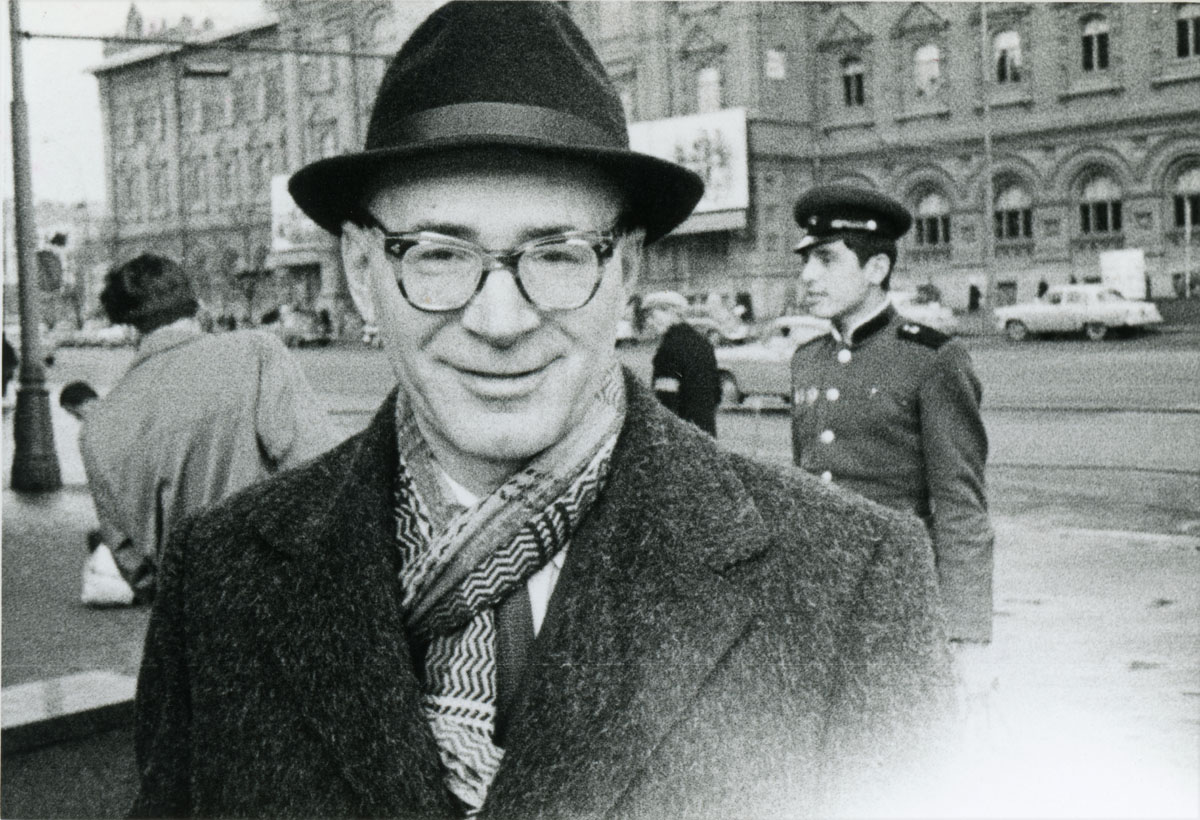
Halmos photographed functional analyst Mark Naimark (1909-1978) in May of 1965 in Moscow, Russia. The two met when Halmos visited mathematicians in Moscow and Leningrad (St. Petersburg) for one month during April and May of 1965 as part of a 1964-65 exchange program between the scientific academies of the U.S. and U.S.S.R. that sent 20 scientists from each country to the other. In his description of this visit in his I Want to Be a Mathematician: An Automathography (Springer, 1985), Halmos described Naimark fondly as beloved by all and “everybody’s uncle” in addition to being a “famous mathematician and a very good one” (p. 310). Born in Odessa, Ukraine, Naimark earned his Ph.D. in 1936 from Odessa State University with the dissertation, “The Theory of Normal Operators in Hilbert Space,” written under advisor Mark Krein. In 1938, he moved to the Steklov Mathematical Institute in Moscow, where he began a collaboration with Israil Gelfand that included papers on normed rings (Banach algebras), unitary representations, and related topics. After holding a variety of academic positions from 1941 to 1962, Naimark finally obtained a permanent post at the Steklov Institute in 1962, which he held for the rest of his life. (Sources: MacTutor Archive, Mathematics Genealogy Project)
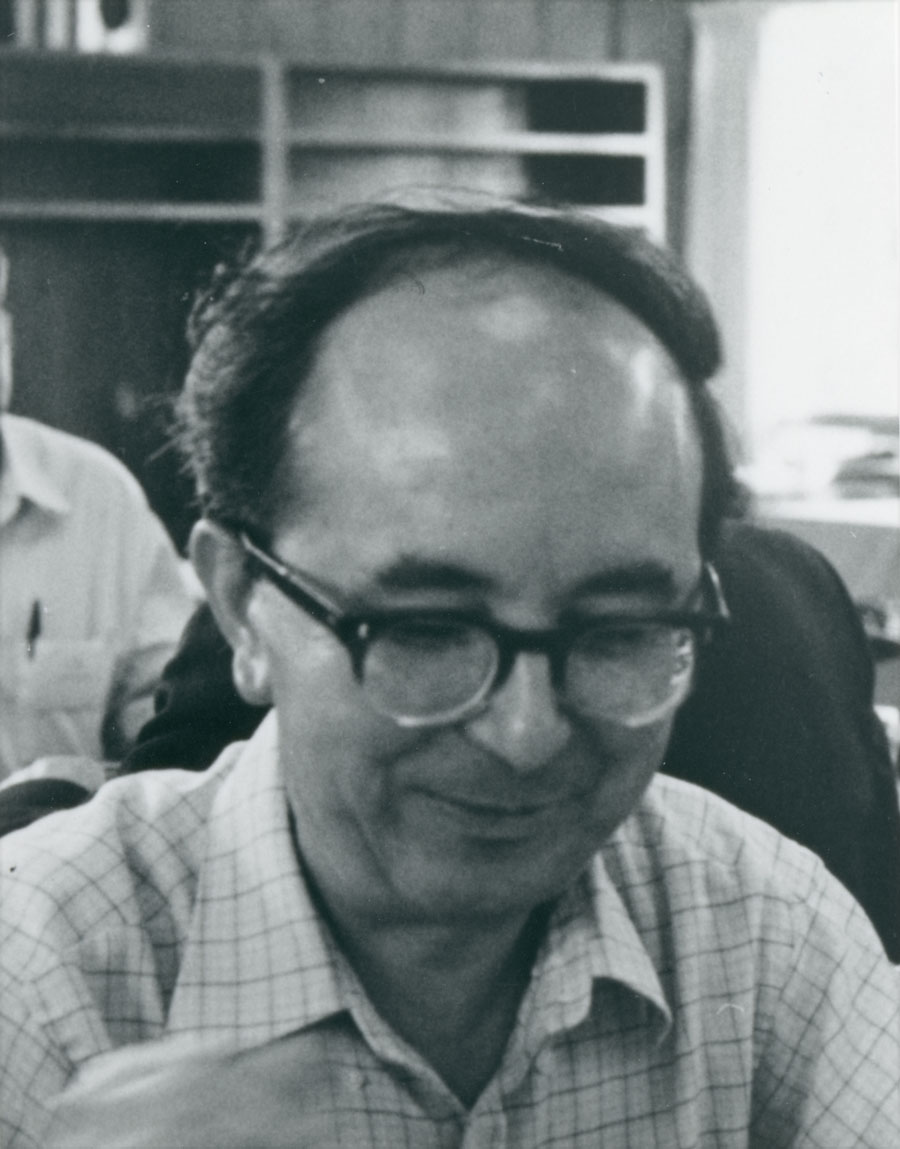
Functional analyst Isaac Namioka was photographed by Halmos in 1985. Namioka earned his Ph.D. in 1956 from the University of California, Berkeley, with the dissertation “On Partially Ordered Linear Topological Spaces,” written under John L. Kelley (see page 27 of this collection for a photograph of Kelley). He joined the mathematics faculty at the University of Washington in Seattle in 1963, where he changed his research focus to functional analysis and is now Professor Emeritus of Mathematics. (Sources: Mathematics Genealogy Project, University of Washington Department of Mathematics, Isaac Namioka (Oct. 2012))
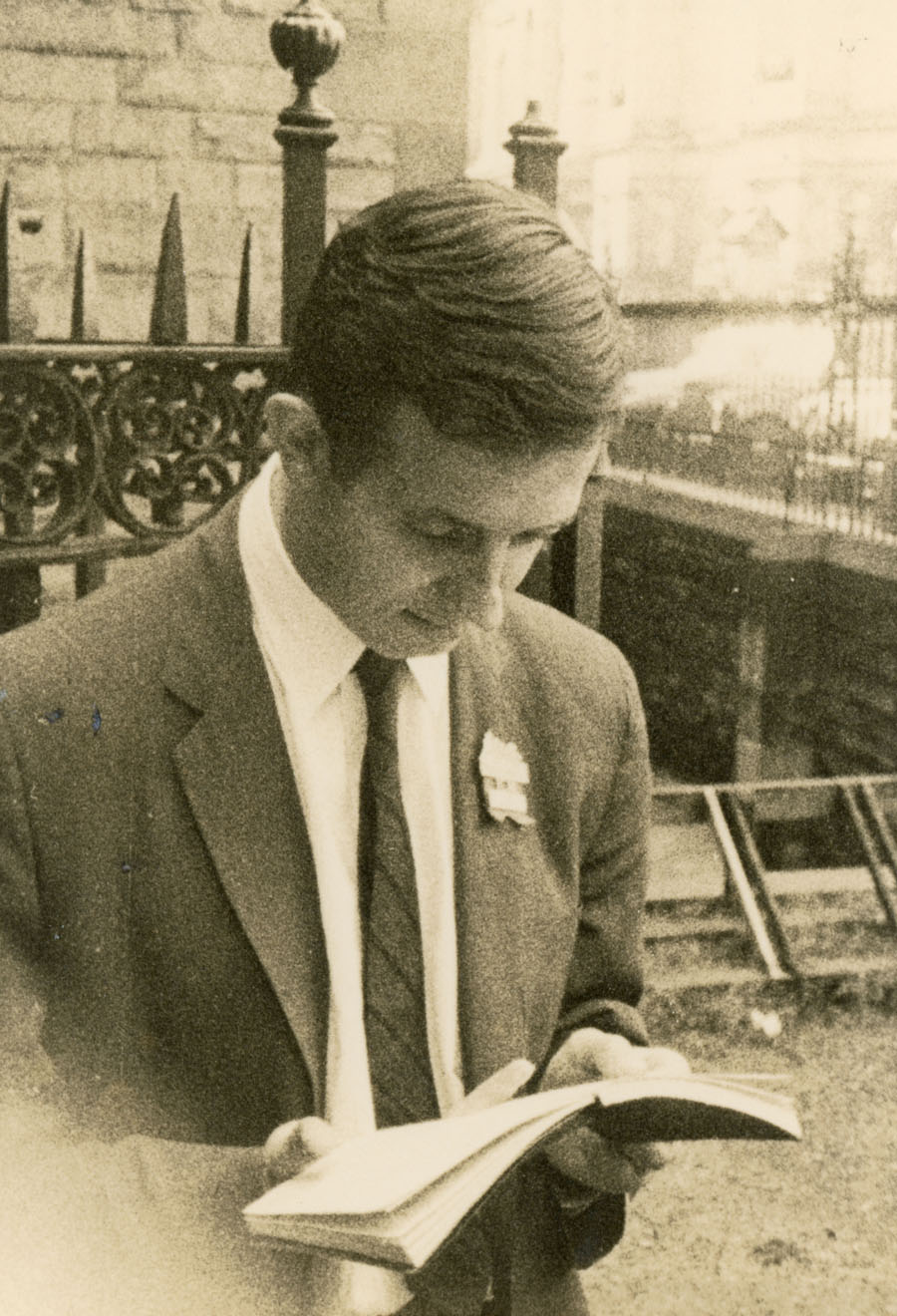
Halmos photographed John Nash (1928-2015) at the International Congress of Mathematicians held in Edinburgh, Scotland, in 1958. John Forbes Nash, Jr., earned his Ph.D. in 1950 from Princeton University with the dissertation “Non-Cooperative Games,” written under advisor Albert Tucker. He was awarded the Nobel Prize in Economics in 1994 for a paper on game theory he had written in 1949, before he earned his doctorate. In this paper and in his doctoral dissertation, he established the mathematical principles of game theory, including the Nash equilibrium. He also invented a game very similar to “Hex” that the Princeton graduate students called “Nash”. Before devoting himself to game theory, he had proved that “any compact real manifold is diffeomorphic to a component of a real-algebraic variety” (MacTutor). While he was on the faculty at MIT from 1951 to 1959, he published three important papers that earned him consideration for the 1958 Fields Medal:
- “Real algebraic manifolds” (1954), which included his earlier result;
- “The imbedding problem for Riemannian manifolds” (1956); and
- “Continuity of solutions of parabolic and elliptic equations” (1958).
As has been well publicized, Nash’s life from 1959 through the 1990s was dominated by schizophrenia, but by the mid-1990s he seemed to have gained the upper hand in his battle with the disease. Long based at Princeton University, by 2012 he had posted at his undated homepage, “My current research interests include logic, game theory, and cosmology and gravitation.” Nash and his wife Alicia were killed in an auto accident on 23 May 2015 in New Jersey as they were returning home from Norway, where John had accepted the 2015 Abel Prize. (Sources: MacTutor Archive, Mathematics Genealogy Project, Autobiography at Nobelprize.org, Home Page of John F. Nash, Jr. (accessed Oct. 2012), John Nash (Nov. 2012))
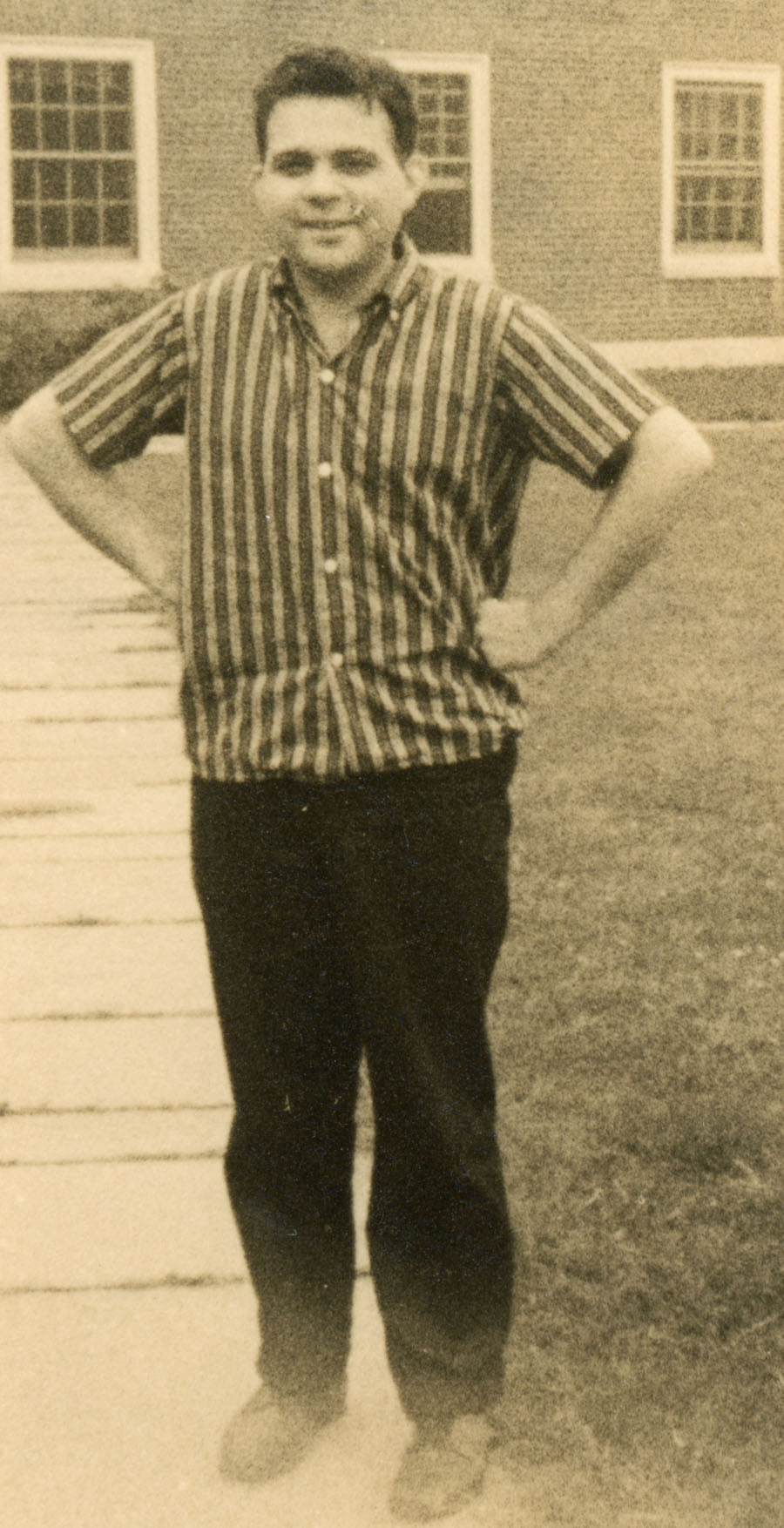
Logician Anil Nerode was photographed by Halmos in 1958, probably at the Institute for Advanced Study in Princeton, N.J., where both spent the 1957-58 academic year. After earning his undergraduate degree from the University of Chicago, Nerode received his Ph.D. in logic in 1956 from Chicago with the dissertation “Composita, Equations and Recursive Definition,” written under advisor Saunders Mac Lane (see page 32 of this collection for photos of Mac Lane). Regarding his choice of advisor, he noted later that Halmos (who was on the faculty at Chicago from 1946 to 1961) was “creating his version of algebraic logic at the time,” but he decided that Mac Lane would be a better advisor for recursive function theory. He spent an extra year (1956-57) at Chicago and then followed Halmos’ advice to participate in the NSF Summer Institute in Logic held at Cornell University in Ithaca, New York, in 1957, which he described as a “signal event” in his life. Nerode spent 1957-58 at the Institute for Advanced Study working with Kurt Gödel and 1958-59 at UC Berkeley working with Alfred Tarski. In 1959, he joined the mathematics faculty at Cornell, where he helped found the graduate program in computer science beginning in 1964, advised 49 Ph.D. students from 1964 to 2009 (and three more elsewhere), and currently is Goldwin Smith Professor of Mathematics. Be sure to visit Nerode’s online photo gallery of logicians and others! (Sources: Mathematics Genealogy Project; Cornell University Department of Mathematics, especially Nerode’s “Autobiography: My Higher Education” (1999/2006); IAS; Anil Nerode (Oct. 2012))
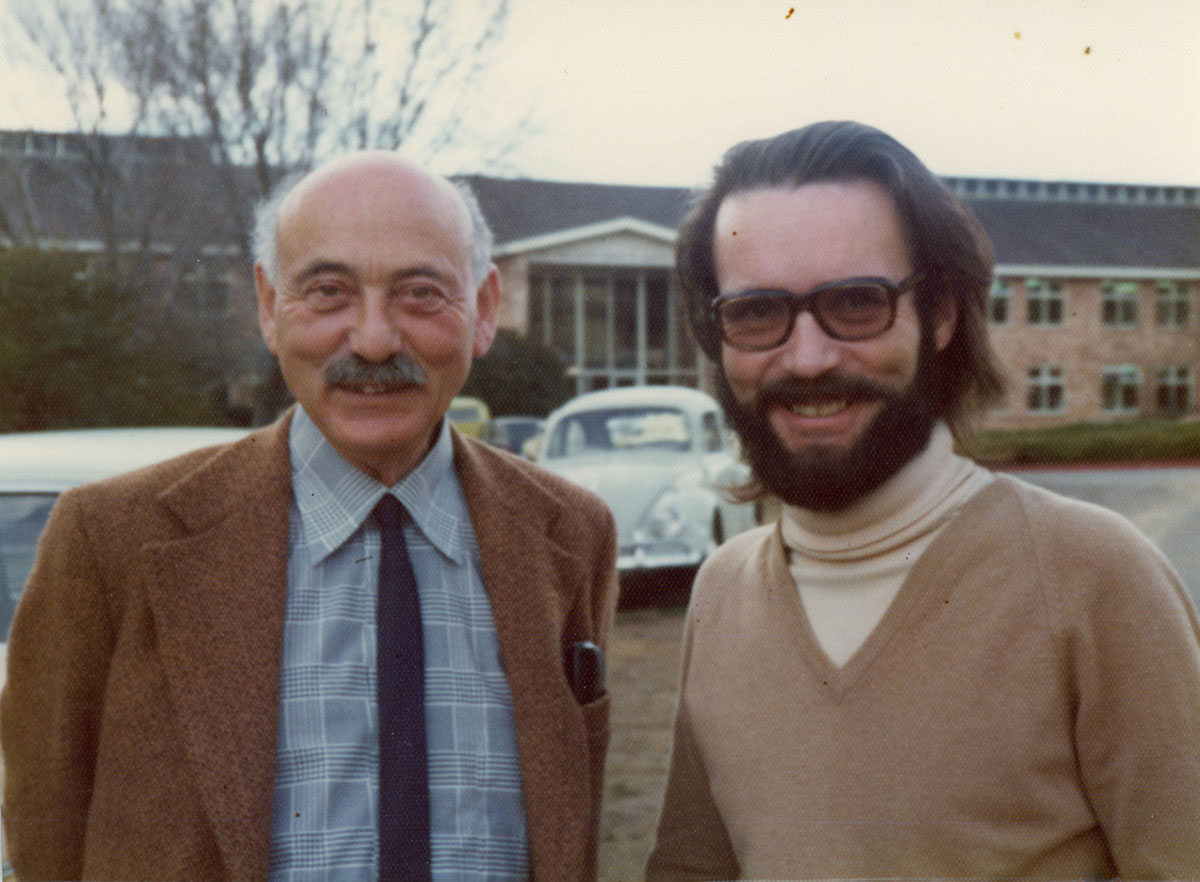
Halmos photographed group theorists Bernhard Neumann (1909-2002), left, and László “Laci” Kovács in June of 1975 in Canberra, Australia.
Neumann earned Ph.D.s in group theory from the University of Berlin in 1932 under Issai Schur and, after fleeing Hitler’s Germany, from Cambridge University in 1935 under Philip Hall. After temporary stints at the universities of Cardiff and Hull and wartime service in the British Intelligence Corps, he joined the faculty at the University of Manchester in 1948. He spent the 1961-62 academic year at the Courant Institute at New York University. In 1962, he accepted a position as professor and department head at the Australian National University in Canberra, where he remained for the rest of his career and life. In 2001, O’Connor and Robertson of the MacTutor Archive wrote, “Neumann is one of the leading figures in group theory who has influenced the direction of the subject in many different ways.” They listed as areas to which Neumann contributed many of the topics in his 1960 Lectures on topics in the theory of infinite groups, including universal algebras, group presentations, word problems, free groups, varieties of groups, Cartesian products, wreath products, embeddings of nilpotent and soluble groups, and Hopfian groups. Neumann collaborated with his wife Hanna Neumann and his son Peter Neumann, both group theorists, and with Graham Higman, among others. He also wrote historical papers on the mathematicians Ada Lovelace (1815-52) and August De Morgan (1806-71), and was President of the Australian Mathematical Society from 1966 to 1968. (Sources: MacTutor Archive, Mathematics Genealogy Project, Australian Academy of Science Memoir)
Neumann’s last Ph.D. student at the University of Manchester was László Kovács, who was awarded the Ph.D. in 1961 for the dissertation “Groups with Automorphisms of Special Kinds.” Laci Kovács has spent most of his career at the Australian National University in Canberra, where he became Retired Visiting Fellow in 2001. He received the B. H. Neumann Award from the Australian Mathematics Trust, presented by Neumann himself, in 1993. (Sources: Mathematics Genealogy Project, Australian National University Mathematical Sciences Institute, Australian Mathematics Trust)
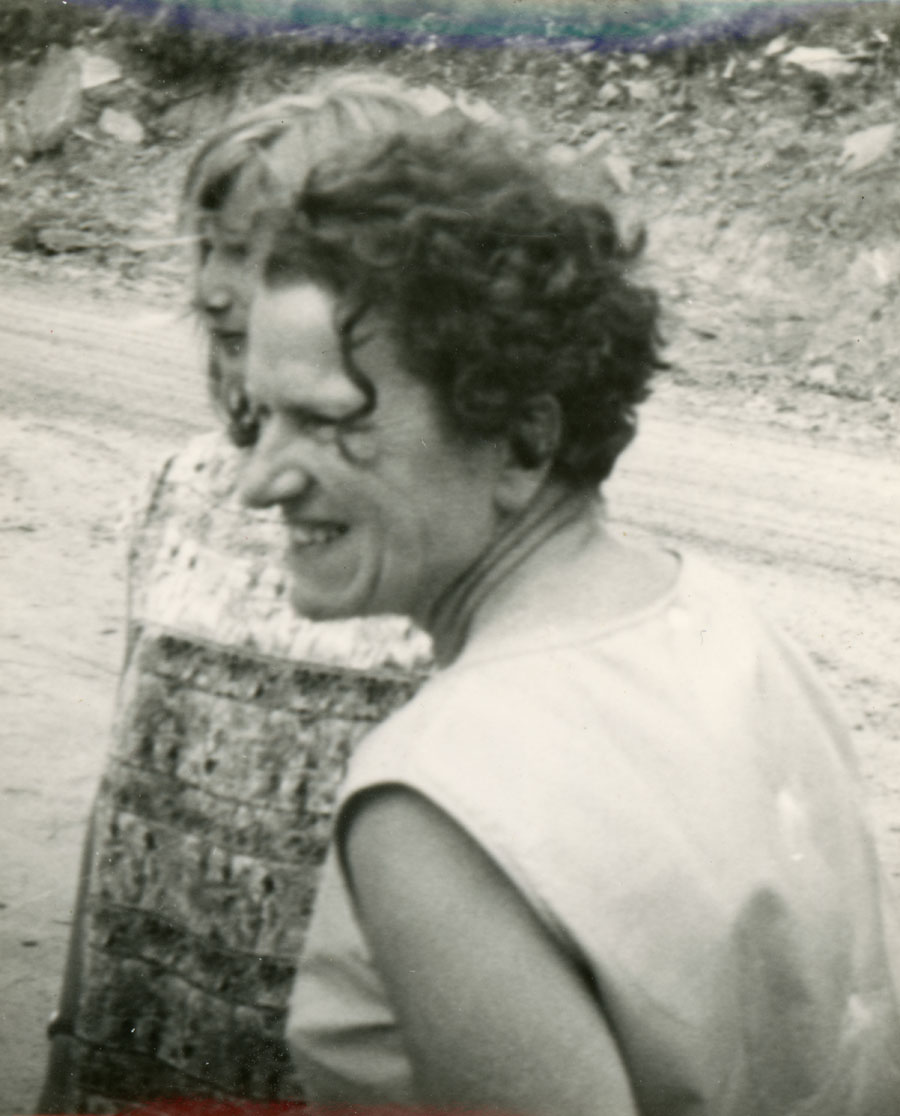
Halmos photographed group theorist Hanna Neumann (1914-1971), front, with Philippa Wall, in January of 1964 in Sydney, Australia, at a Summer Research Institute of the Australian Mathematical Society. At the time, Neumann had been a faculty member at the Australian National University in Canberra for just a few months, having arrived in Australia in August of 1963. Philippa Wall was the daughter of group theorist Gordon "Tim" Wall of the University of Sydney. Laci Kovács (see his photograph above) confirmed recently that:
The 1964 Summer Research Institute was organized by Tim Wall and Halmos was one of the principal speakers; the Walls provided much hospitality to participants, so Halmos would certainly have visited their family home then.
After undergraduate study at the University of Berlin, Johanna “Hanna” von Caemmerer began graduate study at Göttingen University in 1936. In 1938, she moved to England to marry Bernhard Neumann, pictured above, whom she had met when he was a graduate student at the University of Berlin. In 1940, she resumed graduate study at Oxford University and, in 1944, Hanna Neumann earned her D.Phil. in group theory with the dissertation, “Subgroup structure of free products of groups with an amalgamated subgroup,” written under advisor Olga Taussky-Todd. From 1946 to 1958, she was on the faculty at the University of Hull. In 1958, she accepted a position at the University of Manchester, but soon was on the move again: in 1961-62 she spent the academic year at the Courant Institute of Mathematical Sciences at New York University. In 1963, after returning to Manchester for the 1962-63 academic year, she accepted an invitation to join the mathematics faculty at the Australian National University in Canberra, where she remained for the rest of her career and life. In all of her academic posts Neumann was recognized as an excellent researcher and teacher, who also provided incredible amounts of guidance and service to students, colleagues, school teachers, and professional societies in both Britain and Australia. According to O’Connor and Robertson of the MacTutor Archive, of all of her research in group theory, Neumann “is best known for her work on varieties of groups” and “her book Varieties of Groups (1967) is a classic.” (Sources: MacTutor Archive, Mathematics Genealogy Project, Australian Academy of Science Memoir, Laci Kovács (Jan. 2013))
For an introduction to this article and to the Paul R. Halmos Photograph Collection, please see page 1. Watch for a new page featuring six new photographs each week during 2012.
Regarding sources for this page: Information for which a source is not given either appeared on the reverse side of the photograph or was obtained from various sources during 2011-12 by archivist Carol Mead of the Archives of American Mathematics, Dolph Briscoe Center for American History, University of Texas, Austin.
Janet Beery (University of Redlands) and Carol Mead (Archives of American Mathematics, University of Texas, Austin), "Who's That Mathematician? Paul R. Halmos Collection - Page 37," Convergence (January 2012), DOI:10.4169/loci003801




